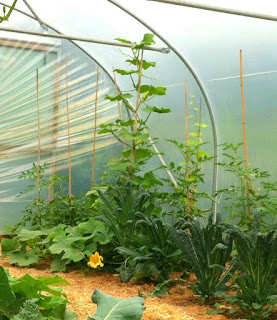Smooth Sow Thistle (Sonchus oleraceus) is a species from the Asteraceae or Compositae family. Also known by a variety of common names including common sow thistle, sow thistle, annual sow thistle, hare's thistle, hare's lettuce, hare's colwort, milk thistle (not Silybum marianum) and swinies. It is a native biennial commonly found in Europe including the British Isles.
Seed can be sow in the spring on the surface of the soil, certainly no deeper than 20mm. They should germinate within the month at 5.3 – 6.8°C. Seedlings can be produced from April through to June but some will still be emerging in September. Smooth sow thistle can tolerate most soil conditions and prefers full sun. This plant does not do well in shady areas, dislikes trampling and grazing or mowing.
Smooth sow thistle has strong medicinal properties and is high in nutrients including calcium, iron and vitamin C.
The plant can be used in a similar way to dandelion. The leaves, stalks, flowers and flowerbuds are edible raw. The green leaves are large and plentiful where they grow. They can be a little bitter, sometimes not at all. Blanching or boiling removes the bitterness. It has been used (cooked) as greens or spinach. The root can be eaten but is reportedly roasted first. The roasted root can also be used as a coffee substitute.
 |
| Smooth sow thistle (S. oleraceus) |
A pioneer species, it will colonise bare ground that has been disturbed and can be found all year round in most areas including wasteland, rubbish tips, roadside verges and gardens. It often disappears during very severe winters. The plant below withstood hard frosts, hard frozen ground and snowfall in Scotland in December.
 |
| Smooth sow thistle during a snowfall |
Growing methods
Seed can be sow in the spring on the surface of the soil, certainly no deeper than 20mm. They should germinate within the month at 5.3 – 6.8°C. Seedlings can be produced from April through to June but some will still be emerging in September. Smooth sow thistle can tolerate most soil conditions and prefers full sun. This plant does not do well in shady areas, dislikes trampling and grazing or mowing.
Fresh seed can be collected and sown the same day. Seed that has been saved and dried may be viable for 10 years. Smooth sow thistle produce thousands of seed although this can vary depending on growing conditions.
Plants grow to around one metre in height and have a flower very similar to a dandelion. The stem is upright and exudes a milky sap. The leaf form and flower colour may vary slightly depending on where they are grown. Check a wide variety of images online to get more of an idea on identification.
Smooth sow thistle will hybridize with prickly sow thistle (S. asper) to produce S. asper x glaucescens, a plant similar to smooth sow thistle but with slightly prickly leaves. There are several species of Sonchus in the British Isles, however, Sonchus oleraceus is the most common.
Plants grow to around one metre in height and have a flower very similar to a dandelion. The stem is upright and exudes a milky sap. The leaf form and flower colour may vary slightly depending on where they are grown. Check a wide variety of images online to get more of an idea on identification.
Smooth sow thistle will hybridize with prickly sow thistle (S. asper) to produce S. asper x glaucescens, a plant similar to smooth sow thistle but with slightly prickly leaves. There are several species of Sonchus in the British Isles, however, Sonchus oleraceus is the most common.
Other uses
Smooth sow thistle has strong medicinal properties and is high in nutrients including calcium, iron and vitamin C.
Raw edible parts
The plant can be used in a similar way to dandelion. The leaves, stalks, flowers and flowerbuds are edible raw. The green leaves are large and plentiful where they grow. They can be a little bitter, sometimes not at all. Blanching or boiling removes the bitterness. It has been used (cooked) as greens or spinach. The root can be eaten but is reportedly roasted first. The roasted root can also be used as a coffee substitute.


















